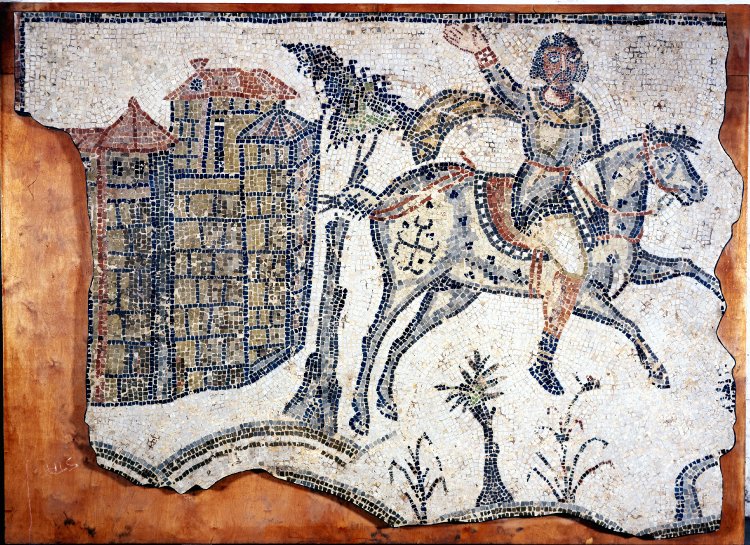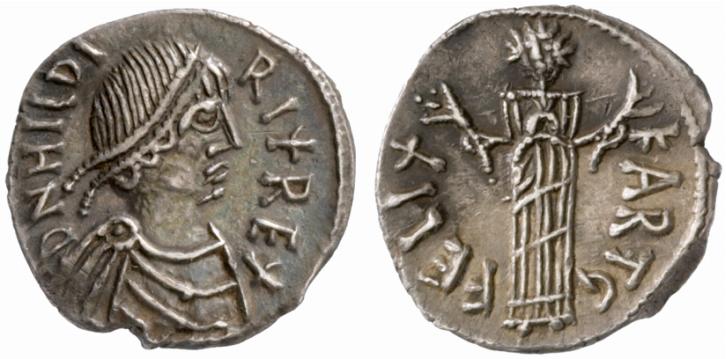|
Ammatus
Ammatus also spelled Ammatas was a Vandal noble and military leader. He was the brother of the Vandal king Gelimer. He had the previous Vandal king, Hilderic, executed on the orders of his brother. On his brother's orders he moved to support Gelimer himself in repulsing a Byzantine invasion at Ad Decimum The Battle of Ad Decimum took place on September 13, 533 between the armies of the Vandals, commanded by King Gelimer, and the Byzantine Empire, under the command of General Belisarius. This event and events in the following year are sometimes .... During the battle there he was killed. References {{Reflist Vandal warriors 6th-century Germanic people Vandalic War 533 deaths ... [...More Info...] [...Related Items...] OR: [Wikipedia] [Google] [Baidu] |
Ad Decimum
The Battle of Ad Decimum took place on September 13, 533 between the armies of the Vandals, commanded by King Gelimer, and the Byzantine Empire, under the command of General Belisarius. This event and events in the following year are sometimes jointly referred to as the Battle of Carthage, one of several battles to bear that name. The Byzantine victory marked the beginning of the end for the Vandals and began the reconquest of the west under the Emperor Justinian I. Battle Prelude The Vandal Kingdom in North Africa was ruled by King Hilderic. His reign was noteworthy for the kingdom's excellent relations with the Byzantine Empire ruled by Emperor Justinian I. Procopius writes that he was "a very particular friend and guest-friend of Justinian, who had not yet come to the throne", noting that Hilderic and Justinian exchanged large presents of money to each other. Hilderic allowed a new Chalcedonian bishop to take office in the Vandal capital of Carthage, and many Vandals beg ... [...More Info...] [...Related Items...] OR: [Wikipedia] [Google] [Baidu] |
Vandalic War
The Vandalic War was a conflict fought in North Africa between the forces of the Byzantine Empire and the Vandalic Kingdom of Carthage in 533–534. It was the first of Justinian I's wars of reconquest of the Western Roman Empire. The Vandals occupied Roman North Africa in the early 5th century, and established an independent kingdom there. Under their king, Geiseric, the Vandal navy carried out pirate attacks across the Mediterranean, sacked Rome and defeated a Roman invasion in 468. After Geiseric's death, relations with the Eastern Roman Empire normalized, although tensions flared up occasionally due to the Vandals' adherence to Arianism and their persecution of the Nicene native population. In 530, a palace coup in Carthage overthrew the pro-Roman Hilderic and replaced him with his cousin Gelimer. The Eastern Roman emperor Justinian took this as a pretext to intervene in Vandal affairs, and after securing the eastern frontier with Sassanid Persia in 532 he began prepari ... [...More Info...] [...Related Items...] OR: [Wikipedia] [Google] [Baidu] |
Gelimer
Gelimer (original form possibly Geilamir, 480–553), King of the Vandals and Alans (530–534), was the last Germanic ruler of the North African Kingdom of the Vandals. He became ruler on 15 June 530 after deposing his first cousin twice removed, Hilderic, who had angered the Vandal nobility by converting to Chalcedonian Christianity, as most of the Vandals at this time were fiercely devoted to Arian Christianity. The Eastern Roman Emperor Justinian I, who had supported Hilderic, soon declared war on the Vandals, ostensibly to restore Hilderic. In June 533, Justinian sent an expeditionary force commanded by Belisarius which finally reached Africa in the beginning of September. Meanwhile, in Sardinia, which formed part of the Vandal domain, the governor Godas, a Goth, revolted against Gelimer and began to treat with Justinian as an independent sovereign. Gelimer, ignorant or contemptuous of Justinian's plans, sent a large army consisting of most of the available army in Afri ... [...More Info...] [...Related Items...] OR: [Wikipedia] [Google] [Baidu] |
Vandal Warriors
The Vandals were a Germanic people who first inhabited what is now southern Poland. They established Vandal kingdoms on the Iberian Peninsula, Mediterranean islands, and North Africa in the fifth century. The Vandals migrated to the area between the lower Oder and Vistula rivers in the second century BC and settled in Silesia from around 120 BC. They are associated with the Przeworsk culture and were possibly the same people as the Lugii. Expanding into Dacia during the Marcomannic Wars and to Pannonia during the Crisis of the Third Century, the Vandals were confined to Pannonia by the Goths around 330 AD, where they received permission to settle from Constantine the Great. Around 400, raids by the Huns from the east forced many Germanic tribes to migrate west into the territory of the Roman Empire and, fearing that they might be targeted next, the Vandals were also pushed westwards, crossing the Rhine into Gaul along with other tribes in 406. In 409, the Vandals cro ... [...More Info...] [...Related Items...] OR: [Wikipedia] [Google] [Baidu] |
United States Army Command And General Staff College
The United States Army Command and General Staff College (CGSC or, obsolete, USACGSC) at Fort Leavenworth, Kansas, is a graduate school for United States Army and sister service officers, interagency representatives, and international military officers. The college was established in 1881 by William Tecumseh Sherman as the School of Application for Infantry and Cavalry (later simply the Infantry and Cavalry School), a training school for infantry and cavalry officers. In 1907 it changed its title to the School of the Line. The curriculum expanded throughout World War I, World War II, the Korean War, and the Vietnam War and continues to adapt to include lessons learned from current conflicts. In addition to the main campus at Fort Leavenworth, the college has satellite campuses at Fort Belvoir, Virginia; Fort Lee, Virginia; Fort Gordon, Georgia; and Redstone Arsenal, Alabama. The college also maintains a distance-learning modality for some of its instruction. Mission statem ... [...More Info...] [...Related Items...] OR: [Wikipedia] [Google] [Baidu] |
Fort Leavenworth
Fort Leavenworth () is a United States Army installation located in Leavenworth County, Kansas, in the city of Leavenworth. Built in 1827, it is the second oldest active United States Army post west of Washington, D.C., and the oldest permanent settlement in Kansas. Fort Leavenworth has been historically known as the "Intellectual Center of the Army." During the country's westward expansion, Fort Leavenworth was a forward destination for thousands of soldiers, surveyors, immigrants, American Indians, preachers and settlers who passed through. Today, the garrison supports the US Army Training and Doctrine Command (TRADOC) by managing and maintaining the home of the US Army Combined Arms Center (CAC). CAC's mission involves leader development, collective training, and Army doctrine and battle command (current and future). Fort Leavenworth is also home to the Military Corrections Complex, consisting of the United States Disciplinary Barracks the Department of Defense's o ... [...More Info...] [...Related Items...] OR: [Wikipedia] [Google] [Baidu] |
Defense Technical Information Center
The Defense Technical Information Center (DTIC, pronounced "Dee-tick") is the repository for research and engineering information for the United States Department of Defense (DoD). DTIC's services are available to DoD personnel, federal government personnel, federal contractors and selected academic institutions. The general public can access unclassified information through its public website. History The DTIC traces its history to the June 1945 formation of the Air Documents Research Center (ADRC), a joint effort of the US Army Air Force, US Navy and Royal Air Force to build a single collection of captured German aeronautical research, based in London. The ADRC was initially tasked with the sorting of the document collection into three broad groups; documents that would assist the war in the Pacific theater, documents of immediate intelligence interest to the United States or British forces and documents of interest for future research. With the ending of the war in 1945, th ... [...More Info...] [...Related Items...] OR: [Wikipedia] [Google] [Baidu] |
Hilderic
Hilderic (460s – 533) was the penultimate king of the Vandals and Alans in North Africa in Late Antiquity (523–530). Although dead by the time the Vandal Kingdom was overthrown in 534, he nevertheless played a key role in that event. Biography Hilderic was the grandson of king Genseric, founder of the Vandal kingdom in Africa. His father was Genseric's son Huneric, and his mother was Eudocia, the daughter of the Roman Emperor Valentinian III and Licinia Eudoxia. Most of the Vandals were Arians and had persecuted Chalcedonians, but Hilderic favored Chalcedonianism as the religion of his mother, making his accession to the throne controversial. Soon after becoming king, Hilderic had his predecessor's widow, Amalafrida, imprisoned; he escaped war with her brother, the Gothic king Theoderic the Great, only by virtue of the latter's death in 526. Hilderic's reign was noteworthy for the kingdom's excellent relations with the Eastern Roman Empire. Procopius writes that he was " ... [...More Info...] [...Related Items...] OR: [Wikipedia] [Google] [Baidu] |
6th-century Germanic People
The 6th century is the period from 501 through 600 in line with the Julian calendar. In the West, the century marks the end of Classical Antiquity and the beginning of the Middle Ages. The collapse of the Western Roman Empire late in the previous century left Europe fractured into many small Germanic kingdoms competing fiercely for land and wealth. From the upheaval the Franks rose to prominence and carved out a sizeable domain covering much of modern France and Germany. Meanwhile, the surviving Eastern Roman Empire began to expand under Emperor Justinian, who recaptured North Africa from the Vandals and attempted fully to recover Italy as well, in the hope of reinstating Roman control over the lands once ruled by the Western Roman Empire. In its second Golden Age, the Sassanid Empire reached the peak of its power under Khosrau I in the 6th century.Roberts, J: "History of the World.". Penguin, 1994. The classical Gupta Empire of Northern India, largely overrun by the Huna, ended ... [...More Info...] [...Related Items...] OR: [Wikipedia] [Google] [Baidu] |

.jpg)




